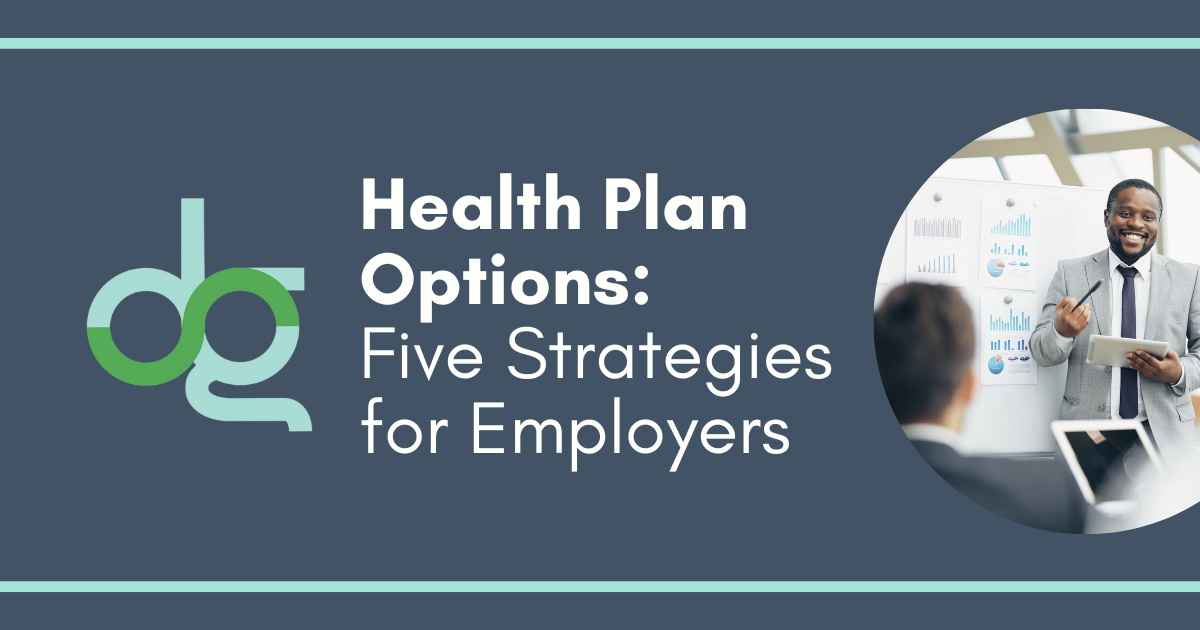Choosing the right health plan for your employees can be a complex and challenging task. With rising costs and an increasingly diverse workforce, employers are seeking more flexible and cost-effective options to provide quality benefits.
If you’re looking to break away from traditional fully-insured plans, here are five alternative health plan options to consider:
1. Level-Funded Health Plans: A Balanced Approach
Level-funded health plans offer a hybrid solution, combining elements of both fully-insured and self-funded plans. In this model, employers pay a set monthly fee that covers administrative costs, stop-loss insurance, and anticipated claims. This structure provides predictability in budgeting, similar to a fully-insured plan, while also offering the potential for savings typically associated with self-funding.
One of the key benefits of level-funded plans is the possibility of receiving a refund if claims are lower than expected. For mid-sized businesses, this can be a cost-effective option, providing a balance between stability and the opportunity to reduce costs. However, it’s important to understand that while these plans offer some financial predictability, they still require a level of risk management.
2. Health Reimbursement Arrangements (HRAs): Flexibility Meets Savings
Health Reimbursement Arrangements (HRAs) are a versatile option that allows employers to reimburse employees for qualified medical expenses on a tax-free basis. This option is particularly appealing for companies looking to dip their toe into self-funding in a controlled, manageable way.
By implementing an HRA, an employer is electing to “self-fund” a portion of each employee’s health insurance deductible. It’s a great way to lower your health insurance costs without having to leave your fully-insured plan.
Here’s how it works:
Suppose your current fully-insured health plan includes a $1,000 individual deductible. By introducing an HRA, you could raise the deductible to $3,000, thereby reducing your health plan premium. However, instead of passing that increased deductible on to your employees, you reimburse the additional $2,000 through the HRA if an individual’s claims exceed the original $1,000 deductible.
In most cases, employers only reimburse 20-25% of the total risk they assumed through the HRA.
3. Self-Funded Health Plans: Greater Control, Greater Responsibility
For employers willing to take on more risk, self-funded (or self-insured) health plans present an opportunity for substantial savings. In a self-funded plan, the employer assumes the financial risk for providing healthcare benefits to employees, paying for claims directly rather than through a fixed premium to an insurance company.
The potential for savings in self-funding comes from avoiding the insurance company’s profit margin and administrative costs. However, this approach also carries increased risk, particularly in the event of high-cost claims. To mitigate this risk, employers purchase stop-loss insurance, which provides financial protection by capping the employer’s liability for individual claims (specific stop-loss) or total claims (aggregate stop-loss).
Self-funding offers significant control over plan design, allowing employers to tailor benefits to meet the specific needs of their workforce.
4. Captive Insurance Plans: Shared Risk, Shared Rewards
Captive insurance plans offer a collaborative approach to self-funding, where a group of like-minded businesses pool their resources to share the risk of providing health insurance. By joining a captive, employers can gain greater control over their health plan design and potentially reduce costs, while still benefiting from some of the protections offered by traditional insurance.
Captive plans are particularly appealing for small to mid-sized businesses that may not have the financial strength to self-fund independently. By pooling risks, members can achieve economies of scale and reduce volatility in claims costs. Additionally, captives often allow for more tailored plan designs, giving employers the flexibility to offer benefits that align closely with their company’s values and employee needs.
5. High-Deductible Health Plans (HDHPs) with Health Savings Accounts (HSAs): Empowering Employees
High-Deductible Health Plans (HDHPs) are designed to lower premium costs for employers while giving employees more control over their healthcare spending. The key feature of an HDHP is its higher deductible compared to traditional health insurance plans. This means that employees must pay more out-of-pocket expenses before their insurance coverage kicks in. However, when paired with a Health Savings Account (HSA), HDHPs can become a powerful tool.
HDHPs typically offer lower monthly premiums than traditional health plans because the insurance company’s risk is reduced by the higher deductible. For employers, this translates into immediate cost savings.
Since employees will pay more out of pocket before insurance coverage begins, this can encourage more cost-conscious decision-making by employees since they have more financial responsibility for their initial healthcare expenses.
To help employees with their expenses, employers can offer an HSA, a tax-advantaged savings account that employees can use to save and pay for qualified medical expenses. Both employers and employees can contribute to an HSA, and the funds can be used to cover costs like deductibles, co-pays, prescriptions, and even some over-the-counter medications.
HSA funds roll over year to year, and they are portable, so employees keep their accounts even if they change jobs or retire.
Making the Right Choice for Your Business
Choosing the right health plan option depends on your company’s size, financial situation, and the specific needs of your workforce. By exploring alternatives like level-funded plans, HRAs, self-funded plans, captive insurance, and HDHPs with HSAs, you can find a solution that balances cost, risk, and employee satisfaction.
Each of these options offers unique advantages, and understanding them can help you make more informed decisions about your company’s healthcare strategy. Whether you’re looking to control costs, offer more customized benefits, or reduce your risk, these options provide viable pathways to achieving your goals.

